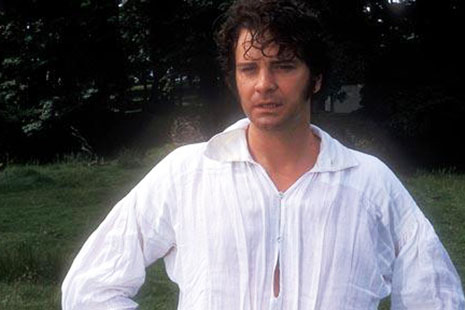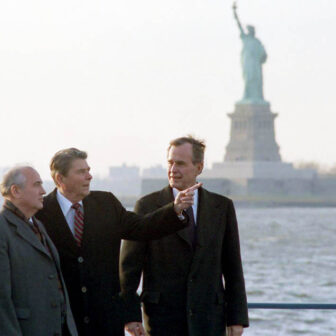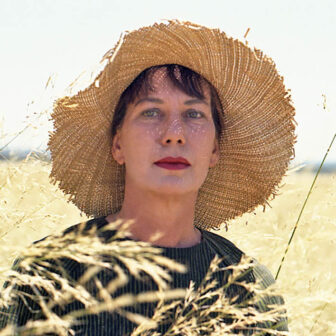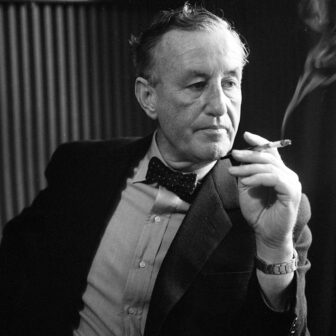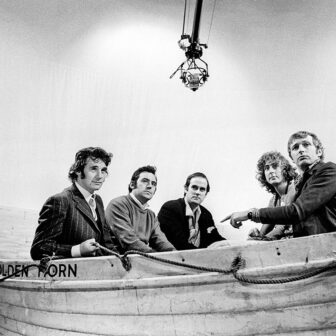Jane’s Fame
By Claire Harman | Text Publishing | $34.95
The Annotated Pride and Prejudice
Annotated and edited by David M. Shapard | Scribe | $35
NEARLY two hundred years after her death, Jane Austen has become a household name of a kind her wildest imaginings couldn’t have conjured up. Who, now, would want to know or live in a household in which she was not a name? Like Dickens or Shakespeare, she has become a sort of generic brand, though there is no doubt a gap between those who have heard of her and those who’ve actually read her – and, one could almost certainly add, between those who’ve read her and those who “know” her from the films and television series derived from her novels. These latter have put the finishing touch to the growth of “Jane’s Fame,” to use the title of Claire Harman’s new book.
Do filmmakers see in her the “first modern novelist,” and as a result believe that she will go on seeming relevant to audiences because of the sorts of concerns that make up her well-turned plots? Are they perhaps drawn to what they see as the comfortable positives of these novels, which invariably end on the prospect of married felicity for the two protagonists? Or is it the moral rigour that draws them, in an age when, as Cole Porter put it long before it was even nearly true, “anything goes”? Or do they just find her funny and cosy and safely distant from our own troubled times?
I have no answer to these questions about what filmmakers are up to in seeking to adapt her novels to the screen. What exactly can they transfer from the pages of, say, Pride and Prejudice to rectangular screens of various sizes? Personally, I make a distinction between what can be transferred (names of people and places, for example, or the bare bones of events) and what requires adaptation proper (matters of character, tone, atmosphere, etc). We may talk loosely of “adapting Jane Austen,” but is this ever really what happens? I suggest that it is more a matter of extrapolation of certain elements and that the most compelling of such adaptations are those in which the filmmaker has fastened on some aspect of the novel that has grabbed his or her attention and made that the focus of the film.
Fearlessly risking widespread denunciation, I would add that the hugely popular 1996 miniseries version of Pride and Prejudice seemed to me devoid of any purchase on the material. What exactly had “turned on” (to use a phrase Austen would not have known but would come naturally enough to Claire Harman) the filmmakers responsible for this coup de télévision? What seems subsequently to have turned on a huge number of viewers (a populous group called “women”) was apparently the sight of Colin Firth’s Darcy in a wet shirt, but not much else does one ever hear of in reference to this miniseries, which so wildly augmented the growth of Austemania.
My own view is that the most provocative of the Austen adaptations are Patricia Rozema’s feminist and post-colonial version of Mansfield Park (1999), and two which took a sharply realist approach to the narratives. These two were Roger Michell’s Persuasion (1995) and Joe Wright’s Pride and Prejudice (2005), both of which evinced a clear point of view on behalf of their directors, as distinct from either a dogged trudge through all the key events, urged on by misplaced “fidelity” to the original, or a shaving of everything to fit running-time so that nothing seems to have much substance. In the former of these two categories, I’d place the 1996 TV version, and in the latter the flavourless Emma of the same year. Ang Lee’s Sense and Sensibility (1995) was an accomplished piece of Hollywood filmmaking, with largely British personnel, especially in casting, but apart from the odd feminist touch it settles for a traditional though intelligent reading of the novel. There is nothing in this film to compare with way Rozema draws on Austen’s letters and other works or foregrounds the slave-owning source of Sir Thomas Bertram’s fortune or the realities of sexual imperatives. And Ang Lee’s film is at a remove from the sense of fierce social and, indeed, physical realism that Michell and Wright espouse, in the process touching the heart with their awareness of the sorts of pain that flow from such an approach.
Claire Harman’s book traces the rise of Jane Austen’s popularity from the very earliest days of her anonymity beyond the family hearth, through the gradual seeping out of information about this author who charted so incisively the small areas of life she knew well and understood so precisely, through the appearance of appreciative comment in such literary journals as that in which Walter Scott extolled her skill in “copying from nature as she really exists in the common walks of life.” She was not beloved by the Victorians, and attracted a reputation of being a “critic’s novelist”: readers engrossed by the passions of the Brontës were apt to find Austen too restrained, even “cold.” In the late nineteenth and early twentieth centuries she won the devoted partisanship of Rudyard Kipling and G.K. Chesterton, but neither Mark Twain nor D.H. Lawrence was prepared to join the chorus of approval set up by the growing number of “Janeites.”
That last hideous term points to the sort of tedious idolatry that has grown up about the name of this perhaps greatest of English novelists. As a general rule, trust no one who refers to her as “Jane,” or to critics who gush as A.C. Bradley did about Elizabeth Bennet, writing “I was meant to fall in love with her, and I do.” She is too tough a bird to need that kind of gush. Harman offers very revealing insight into Austen’s popularity in the trenches of the first world war and into the soaring between-wars readership, when the surge of translation of Austen into French “was second only to the wave of interest following the Austen film adaptations of the 1990s.” The canonisation was setting in with the regular appearance of Austen on university English Literature syllabuses on the one (critical) hand, and in the formation of the Jane Austen Society on the other. This latter has been fascinated with every detail, trivial or otherwise, relating to its idol, and I can’t think that the photograph which Harman includes of its founders outside Austen’s Chawton cottage would do much for its reputation. Anyone under forty seeing this snapshot of four elderly types stiffly posed would be likely to turn to Dan Brown instead. But these Societies still flourish in several continents, especially in the United States, where Twain notwithstanding she has always had an immense following.
The process of canonisation, academic and popular, was accompanied by a growth in what can only be called the Jane Austen industry. In Bath, where she spent part of her life, you can buy all manner of artefacts (calendars, notepads, tea-towels and the like) that trade on her name and works. Possibly Lyme Regis makes as much of the spot where Louisa Musgrove was “jumped down” from the Cobb in Persuasion; and you can certainly look over the Austens’ Chawton cottage. Perhaps filmmaking can be seen as the most extreme example of the creation of industrial product from the raw material of her six novels. In fact, no “perhaps” about it: film is undoubtedly an industry as well as an art form. Austen herself, like the great Victorian novelist, George Eliot, whose letters show how interested in sales she was, did not affect a quivering distaste for the commercial aspects of publishing. The Austen who emerges from Harman’s book would probably have been gratified at the rewards of fame that film adaptation brought. She might indeed have been quite astute at negotiating rights, whereas of course no filmmaker now has to pay a penny to have his way with her.
Jane’s Fame (and I wish the title could have been less chummy in referring to her) offers a good deal of valuable information about the rise to critical and popular acclaim, along with periods of relative obscurity. It is written in a breezy but undistinguished style (“Phew!” is her response to someone gushing about Austen’s needlework; she describes R.W. Chapman as “quite an operator”), and there is a recurrence of usages such as “probably,” “presumably,” “it seems likely” and “one imagines” which to some extent undermines our faith in her narrative. This may be understandable in the light of Austen’s early wish to remain anonymous, thus making problems for her biographers, and the lack of detailed, known information about her life has perhaps engendered speculation – and the almost feverish falling on such minutiae as have been found.
IN THE PRECEDING PARAGRAPH, I mentioned the name R. W. Chapman – like Austen, the offspring of a clergyman. A major turning-point in the canonisation of Jane Austen was undoubtedly the 1923 appearance of The Novels of Jane Austen, edited in six volumes by Chapman, and reprinted and revised on nearly twenty occasions, appearing in 1988 as The Oxford Illustrated Jane Austen. For those who find Dr Chapman’s “Notes,” discreetly placed at the end of each volume, inadequate to their understanding or enjoyment of Pride and Prejudice, it is just possible, but not I think likely, that they will find use for David M. Shapard’s The Annotated Pride and Prejudice.
Maybe I should come clean and reveal that Pride and Prejudice is probably the novel I know best. As a thirteen-year-old country schoolboy of no particular sophistication, I was lent this unpromising-looking red Everyman edition, and one wet Saturday began desultorily to read it – and couldn’t put it down. I may have read/taught it fifteen to twenty times since. Somehow, way back then, I read and was absorbed by it without the help of any annotations, let alone the often preposterously unnecessary explanations given in Shapard’s edition. Who, embarked on Jane Austen, needs to have “ideas” glossed as “thoughts,” or “came away” as “departed,” or “accurate” as “precise,” or “directly” as “immediately”? Or to be told that “ascertain” means “make certain,” or that “a parsonage-house” is “a residence for a parson,” or the dubious accuracy of “narrow-minded” as meaning “self-centred”? But it is not just a matter of the merely unnecessary, or even of the inaccurate. Shapard keeps wanting to tell us how to read Austen on an interpretive level, and the perceptions thus on display tend on occasion both to be banal and to work towards defusing the wit of the original. See for instance what he wants us to do with the great line in which her guests gather round to hear “Lady Catherine determine what weather they were to have on the morrow.” If the stringency at work there doesn’t amuse you, I doubt if Shapard’s laboured glossing of the line will make it seem funny. Neither will being told, when Darcy bears with “fortitude” the fact that the Gardiners are relations of Elizabeth’s, that this means he bears “with fortitude having to meet people of lower social position,” improve on Austen’s irony.
But it is on the matter of interpretation that I take most issue with this edition, and this is what I mean by “banal.” I don’t want to be told what I should be making of this or that remark, how it echoes or anticipates other episodes, whether Austen or a character is being “sarcastic.” Some of this kind of commentary is utterly fatuous. When Mr Collins is telling Elizabeth that he had at once singled her out “as the companion of my future life,” Shapard reminds us that “In fact, he first expressed an interest in Jane.” As we well know, since it happened only a few pages earlier. When Mrs Gardiner, from London, is describing the newest fashions to the Bennet women, we are helpfully informed that London “received the latest fashions before the countryside.” Oh, go on!
Of course some of the information he parades is interesting. For example, the material about William Gilpin and the concept of “the picturesque” may well be helpful, for instance in appreciating what Elizabeth Bennet sees in the situation of Pemberley, Darcy’s imposing house. Up to a point, too, the stuff about meals, when and what was customarily served at different social levels, is diverting enough – the first time it is discussed, anyway. If you want to know about the different kinds of carriages available at the turn of the nineteenth century, you can compare the sketches of each; and if you are curious about the usage of paper in Austen’s time it is spelt out for you.
If the foregoing sounds curmudgeonly on my part, I should say that I find the enterprise very daunting. Who is it intended for, I wonder? Who could possibly need the pedestrian chapter headings he suggests, Austen having thoughtlessly failed to provide any? Those who come to the novel for the first time will surely be irritated by the fact that every right-hand page with its annotations will distract their attention from the narrative that occupies the left page. Those who know the novel well will probably decide they don’t need most of it after sampling a few chapters. As a conscientious reviewer, I’ve waded through its 700-odd pages, and, though I’ve picked up a few attractive details of fact, I’ve mostly resented the interruptions to re-reading one of my favourite novels. On first looking into Chapman’s Austen (as Keats so nearly said), I felt I was in the presence of major but lightly worn scholarship; not so with Shapard. Too often his glosses seem like mere interference with some of the sharpest wit to be found in the English novel.
It is one thing to admire, even revere, Austen’s novels; it is another to engage in the kind of idolatrous avidity exhibited by some of her followers that has often seemed to me to make serious appraisal difficult. It can make it hard to deal fairly with approaches to the novels at odds with our own. I’m particularly concerned here with the way in which this sort of sanctification has influenced so much of the discourse in relation to the film adaptations of her novels. One is forever hearing about this or that film or television version, “Oh, it’s not like that in the novel” or “You’ve only to read the letters to know…” or “The costumes are at least a decade too late (or early)” or “She’s far too modern for Elizabeth or Emma… or whoever.”
For me, I’m very glad that Jane Austen – that is to say, “Jane Austen” as embodied in six novels – is now so unassailably secure a part of the English-speaking cultural heritage. Two recent film titles, Becoming Jane (2007) and the miniseries Lost in Austen (2008), point to the unabated fervour and commercial viability of her name. The latter title, though, might give us pause: rather than being “lost in Austen,” it might be more rewarding to “find in Austen” some of the truest insights into human behaviour ever committed to the page. •
